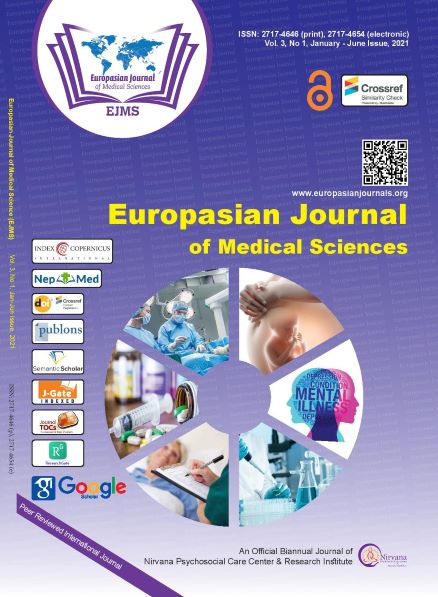Profile and Outcome of Snake-bite Envenomation: in Far-western Province of Nepal: An Observational Hospital-based study
Abstract
Background: Snakebite is a well-known medical emergency and a cause of
hospital admission with significant mortality in our country. So, this study aims
to find out the status and outcome after the envenomation of snake bites in the
Farwest Provincial hospital of Nepal.
Methods: This is a prospective observational study from 15th April 2018 to
14th April 2019. All the snake bites presented to the hospital were recorded and
observed till discharge, death, or referral. Case management was done as per the
WHO guideline 2016. Ethical permission was taken from the hospital and informed
consent was taken from each participant. The data were entered in Microsoft Excel
and analyzed using SPSS and data analysis was done with appropriate descriptive
statistical tools.
Results: A total of 362 snakebites were admitted to the emergency department
of this hospital during one year period, among them, 71% were non-poisonous,
and the remaining 29% were poisonous. There were 17 deaths out of 362
snakebites with a case fatality rate of 12 %. Among poisonous snakebites, 36%
were Krait. Major clinical features of envenoming were ptosis, nausea, vomiting,
pain abdomen, parotid tenderness, numbness, blister, and bleeding in the bitten
parts. 86% of poisonous bites were given 100ml vial of snake venom antiserum.
Few cases required additional 10 vials (100ml) and 13.5% required mechanical
ventilation support for respiratory paralysis. There was no mortality in the
Intensive Care Unit and ward.
Conclusion: Snakebite is a seasonal life-threatening emergency public health
problem in the Farwest Province of Nepal. There is high mortality of snake bites
without intervention and excellent outcomes after proper intervention at the time
were observed. Community awareness and strengthening health systems are
major activities to be done to reduce the burden of Snakebites cases.
Copyright (c) 2021 Authors

This work is licensed under a Creative Commons Attribution 4.0 International License.
All articles published in EJMS are licensed under the Creative Commons Attribution 4.0 International License (CC-BY 4.0). The author/s as the copyright holder will retain the ownership of the copyrights without restrictions for their content under the CC-BY 4.0 license, and allow others to copy, use, print, share, modify, and distribute the content of the article even in commercial purpose as long as the original authors and the journal are properly cited. No permission is required from the author/s or the publishers. Appropriate attribution can be provided by simply citing the original article.
On behalf of all the authors, the corresponding author is responsible for completing and returning the agreement form to the editorial office. More information about the terms and conditions, privacy policies, and copyrights can be found on the webpage of the Creative Commons license privacy policy. https://creativecommons.org/licenses/by/4.0/




